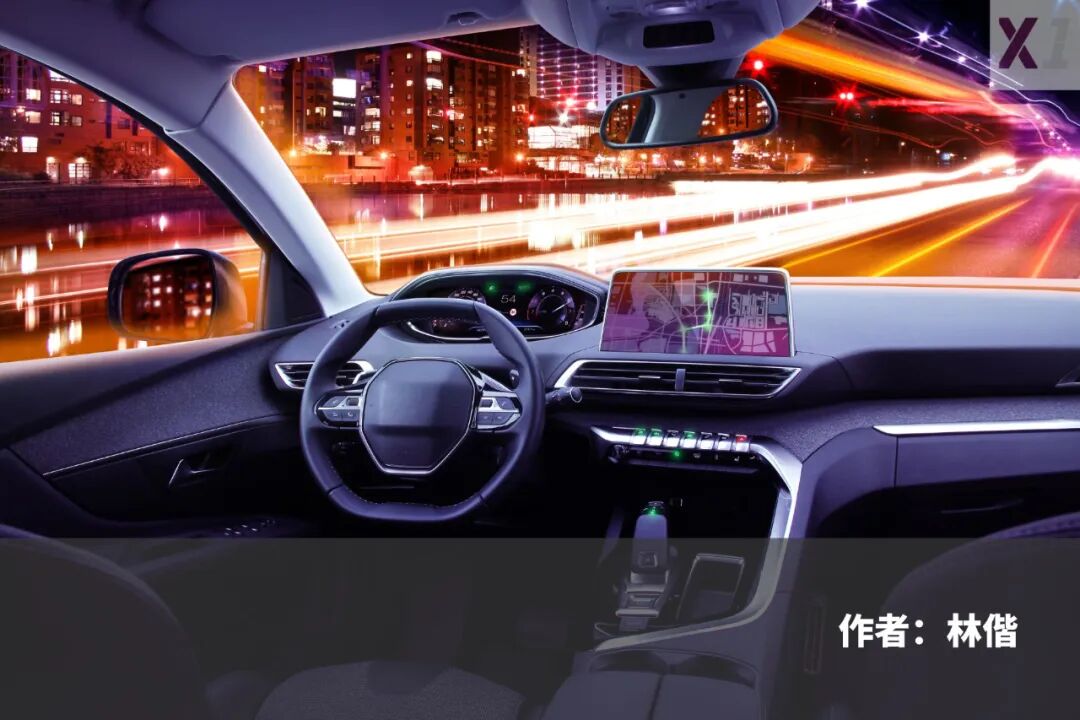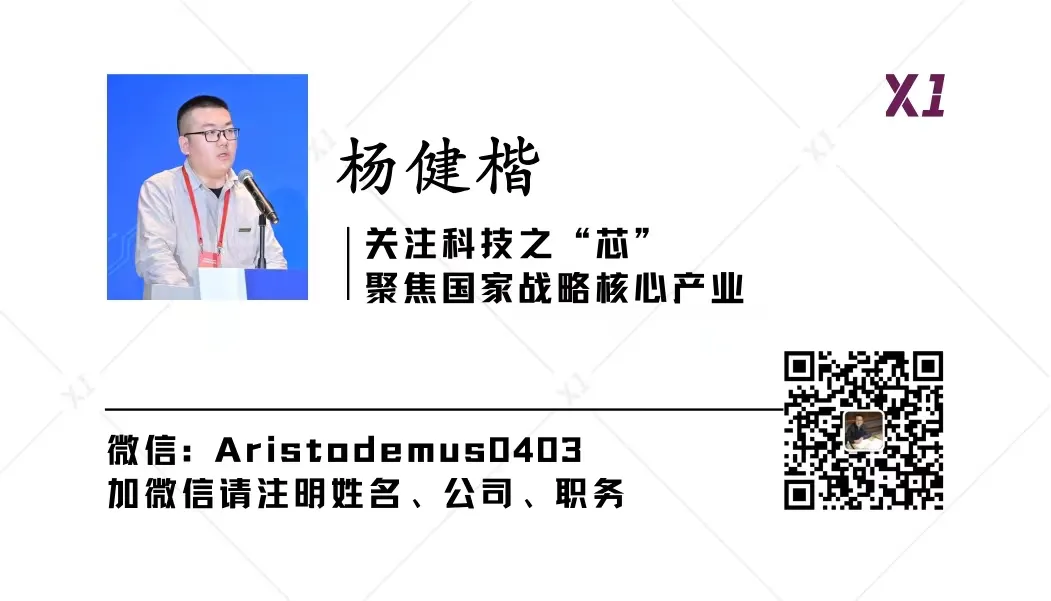
【Abstract】On April 23, Chipone Technology unveiled its next-generation 4nm AI cockpit chip X10 at the Shanghai Auto Show, accelerating the smart cockpit revolution through ecosystem building and hardware breakthroughs.
The chip integrates40 TOPS NPU computing power and 154 GB/s ultra-large memory bandwidth, supporting the deployment of 7B multimodal large models on the edge, addressing response latency issues.
In terms of ecosystem,X10 is compatible with mainstream open-source large models such as DeepSeek, collaborating with partners like Zebra Smart Travel and Wall Smart to create hardware-software collaborative solutions, and providing standardized interfaces for plug-and-play AI applications.
Previously, Chipone had already secured the top position in the domestic cockpit chip market with its X9 series products, covering over 50 vehicle models, with X10 planned for mass production in 2026.
As BYD promotes “Smart Driving for All,” Chipone is charting a new path for the development of smart cockpits in the next 3-5 years.
Below is the main text:
In early 2025, following the domestic popularity of DeepSeek, the concept of “AI defining automobiles” is rapidly penetrating major automotive companies, with smart cockpits naturally becoming an important carrier for AI in vehicles.
Moreover, with BYD’s slogan of “Smart Driving for All,” market expectations for automotive functions are higher, and the overall intelligence of vehicles will become a crucial consideration for consumers when purchasing cars.
According to monitoring data from the GaoGong Intelligent Automotive Research Institute, the penetration rate of smart cockpits (connected large screens/multi-screen entertainment + intelligent voice interaction) in the Chinese market (excluding imports and exports) is expected to rise to 72.58% in 2024, and is projected to exceed 80% in 2025.
The competition for AI cockpits will intensify as the overall vehicle intelligence evolves.
In recent years, many manufacturers have entered the cockpit chip market, but few have managed to differentiate their cockpit chips. The market has already become a red ocean. With the explosive popularity of AI cockpit chips, the market’s understanding of supplier scenarios, ecosystems, and technologies will demand higher standards.
During the Shanghai International Auto Show on April 23, Chipone Technology, a leading domestic automotive chip company, launched its latest generation AI cockpit chip X10, bringing a new solution to the cockpit market.
01
The Ecosystem Determines the Lower Limit
In the past two years, the AI smartphone concept has gained immense popularity, with many smartphone manufacturers adopting AI labels. However, early users often found the experience disappointing. The core reason is that smartphones struggled to adapt to AI large models, and the software features were too limited to meet consumer expectations for AI.
The failures above provided an important lesson for major smartphone manufacturers: AI products are not like digging sand on the beach; customers will not be enthusiastic about incremental updates. Any product with AI needs to have a complete and mature ecosystem from the start to meet the passing mark.
This principle applies perfectly to the automotive cockpit field.
However, in the fast-paced iteration of vehicle models, automakers often do not have the time to reach out and connect with the AI ecosystem, which tests suppliers’ ecosystem building and scenario understanding capabilities. At the very least, they need to recognize the importance of the ecosystem.
In this regard, Chipone, which has led the cockpit field for many years, has clearly recognized this and has proactively adapted its ecosystem.
In this product launch, Chipone has built an open and diverse AI ecosystem around X10, supporting mainstream open-source large models such as DeepSeek, Qwen, and Llama, and has established partnerships with Zebra Smart Travel and Wall Smart to ensure the capability to adapt to in-vehicle AI large models in advance.
According to Hao Fei, co-CEO of Zebra Smart Travel, the two parties will further collaborate on core technologies such as the AliOS operating system, virtualization technology (Hypervisor), and AI large models to jointly build software and hardware solutions for AI cockpits and high-end intelligent control.
This is Chipone’s own ecosystem, and its more robust capability lies in the fact that Chipone can provide software and hardware collaborative optimization support for automakers’ self-developed large models, ensuring maximum model performance through an integrated solution. Additionally, the AI toolchain accompanying X10 includes functions such as compilation, quantization, simulation, and performance analysis, which help significantly shorten the model deployment and performance tuning cycle.
Furthermore, to lower development thresholds and provide a broader ecosystem space, the X10 SDK will also offer a standardized model calling interface, simplifying the development and migration of AI applications, achieving plug-and-play for AI applications. This provides flexible customization possibilities for automotive manufacturers, algorithm suppliers, and application developers, laying the groundwork for continuous iterations in the coming years.
Integrated adaptation solutions, self-developed model adaptation, and plug-and-play capabilities are the most urgent demands from automakers for suppliers in the current price competition, fundamentally stabilizing cost-effectiveness and speed.
For example, BAIC has announced plans to be the first to equip the X10 to launch a new generation AI cockpit platform. Previously, BAIC’s localized intelligent cockpit platform, built on Chipone’s X9 series cockpit chips, has already been scaled up for application in multiple mass-produced vehicle models. This deepens the collaboration and recognizes Chipone’s collaborative innovation from the underlying chips to upper-level applications.
Only by launching an AI cockpit product that exceeds expectations can automakers win consumers’ hearts, and this characteristic will bind cockpit chip manufacturers with strong scenario understanding capabilities more closely to automakers.
02
Infrastructure Determines the Upper Limit
Returning to the iron law of chip industry competition, the key innovations are the processes and architectures that fully meet functional requirements.
For cockpit chips, this requires manufacturers to fully understand the relationship between AI and vehicles under limited resources and to make targeted changes to the processes.
In the era of AI cockpits, high throughput and continuous operation of AI computing tasks in different application scenarios are foreseeable demands, which place high requirements on chip processing capabilities.
It is worth mentioning that the Chipone X10 product adopts advanced 4nm process technology.
Compared to the 7nm/5nm processes commonly used in current mainstream high-end automotive chips, 4nm is a significant leap forward, with noticeable improvements in transistor density, performance, and power consumption control.
Additionally, the Chipone X10 series products utilize an ARMv9.2 CPU architecture optimized for AI computing, with CPU performance reaching 200K DMIPS; at the same time, X10 integrates an 1800 GFLOPS GPU and a 40 TOPS NPU, and is equipped with a high-speed LPDDR5X memory interface of up to 128 bits, achieving a speed of 9600 MT/s, providing the entire system with an ultra-large bandwidth of 154 GB/s.
These capabilities address the critical “slow” and “lag” issues in AI cockpit experiences, the latter being a vital aspect of cockpit experience.
Compared to high-level intelligent models that pursue complex functions but are limited by real-time performance, users show a stronger demand for models with stable and consistent output capabilities; “stability” and “consistency” are key. Chipone’s process and architecture refinements are precisely aimed at approaching the core demands of AI cockpits.
This is crucial for automakers eager to build comprehensive vehicle intelligence; in the age of the internet, a car function that is prone to “flipping” can quickly escalate to an unbearable level for automakers.
With this in mind, Chipone’s X10 product focuses on meeting the demands of edge deployment of 7B multimodal large models, providing 40 TOPS NPU computing power, paired with an ultra-large bandwidth of 154 GB/s, ensuring that the performance of large models is fully realized.
For example, with a 7B model, if 4-bit quantization precision is used, a generation speed of 20 tokens/s can be achieved, with a bandwidth requirement of approximately 90 GB/s, while X10 provides an ultra-large bandwidth of 154 GB/s for the entire system, capable of simultaneously meeting the needs of running large models and traditional smart cockpit applications.
Existing cockpit processors on the market may meet some requirements in NPU performance, but their memory bandwidth is mostly in the range of 60-70 GB/s, making it difficult to meet the deployment of 7B models. It is even more challenging to meet the industry’s recognized core demands for AI cockpits: “fast response for small models, multimodal interaction for medium models, and complex task processing for cloud-based large models.”
Additionally, it is worth mentioning that, aside from performance advantages, excellent edge AI large model adaptation capabilities also ensure user data privacy protection, which will be a worry-free choice for automakers considering going global, meeting compliance and localized adaptation needs.
03
The Market Window is Only 8 Months Left, the Positioning Battle is Coming
The AI capabilities of automotive cockpits are evolving from basic voice assistants and simple vehicle controls to multimodal interactions, task planning, and personalized recommendations as AI intelligent agents.
Especially as AI in other markets is rapidly developing, in-vehicle AI will soon become an important consideration for consumers when choosing vehicles.
Moreover, BYD’s Smart Driving for All has narrowed the competition range for models priced between 100,000 to 200,000 yuan. In an environment where high-speed NOA and automatic parking intelligent driving functions are becoming similar, automakers want to introduce new features in overall vehicle intelligence at limited costs, and AI cockpits are a highly cost-effective choice.
In fact, regarding the vehicle rhythm, the X10 series chips are planned for mass production in 2026, and Chipone will continue to work with OEMs, Tier 1 suppliers, and ecosystem partners to empower innovative breakthroughs and practical applications of AI cockpits, driving smart cockpits into the true AI era for all.
Previously, the Chipone X9 series has become the mainstream choice for automotive-grade intelligent cockpit chips in China. According to the 2024 intelligent cockpit chip ranking released by the GaoGong Intelligent Automotive Research Institute, Chipone has the highest market share in the domestic market with the X9 series, covering over 50 vehicle models.
Based on the rhythm of automakers’ model selection, pinpointing, and adaptation, the time left for other automotive chip manufacturers to catch up will only get shorter.
The automotive intelligence era has entered a phase of pursuing speed and cost-effectiveness. The evolution of the assisted driving market in recent years has fully demonstrated the crushing competitive advantage of leading manufacturers, and cockpit chips have clearly entered the Matthew effect stage.
However, having benchmarks in the market is a good thing.
The launch of the Chipone X10 series also marks an important step towards the popularization of AI in smart cockpits, effectively addressing the technical bottlenecks in the current cockpit intelligence process and outlining a clear technological evolution path for the development of smart cockpits in the next 3-5 years.
The endgame of AI cockpits is moving towards a new stage.
– XINLIU –
 If you like it, give Chipone a “👍” and “look”~
If you like it, give Chipone a “👍” and “look”~